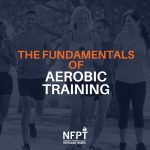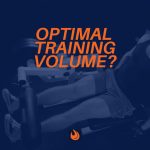
Encountering a personal training client with disordered eating, which can be distinct from clinical eating disorders, is highly probable at some point in the fitness professional’s career. Fad diets, low caloric intake, and a general preoccupation or obsession with food and body weight are common in American culture and, more specifically, in the health and fitness industry.
When should a fitness professional step in if he or she suspects a client’s original general interest in eating well has evolved into a potentially unhealthy relationship with food? And how does one distinguish between an eating disorder and disordered eating?

Disordered Eating
According to the Academy of Nutrition and Dietetics, disordered eating is a descriptive term used to describe a wide array of irregular eating behaviors and patterns that may or may not warrant a diagnosis. This is in contrast to eating disorders such as anorexia or bulimia which have narrow diagnostic criteria. Although, many individuals displaying characteristics of disordered eating may be misdiagnosed as anorexic or bulimic.
Features of eating disorders are present in an individual exhibiting disordered eating; the number of symptoms that he or she presents with isn’t enough for a clinical diagnosis. The level of severity and the frequency in which those behaviors occur are also distinguishing factors. Still, those with disordered eating tendencies may develop a clinical eating disorder over time if the behaviors are not addressed.
Look out for behavior such as taking diet pills, laxatives, enemas, or diuretics misuse, fasting (for weight loss, rather than autophagy), skipping meals, binging, or unbalanced eating, such as cutting out carbohydrates completely for fat loss.
EDNOS/OSFED Disorders
The Academy of Nutrition and Dietetics reminds us that, like anorexia and bulimia, Eating Disorder Not Otherwise Specified (EDNOS), also known as Other Specified Feeding and Eating Disorders (OSFED), has unique diagnostic criteria as defined by the American Psychiatric Association. Again, disordered eating behaviors may lead to this clinical diagnosis.
Diagnostic examples of these types of EDNOS/OSFED include:
- Atypical anorexia nervosa (all criteria are met but the individual does not experience weight loss)
- Bulimia nervosa of low frequency and/or limited duration
- Binge eating disorder of low frequency and/or limited duration
- Purging disorder
- Night Eating Syndrome
Warning Signs of EDNOS/OSFED
Individuals dealing with a type of EDNOS/OSFED will likely display a range of emotional, behavioral, and physical signs and symptoms. This list is not exhaustive and is not intended for the fitness professional to use as a diagnostic tool. Instead, use this information to educate yourself and thoughtfully document your observations. Note if your client:
- Experiences dramatic weight loss
- Makes frequent comments about feeling “fat” despite weight loss and progress
- Denies feelings of hunger
- Skips meals or takes small portions of food at mealtime
- Complains of lethargy
- Drinks excessive amounts of water or other non-caloric beverages
- Frequently diets
- Shows extreme concern with body shape
- Has notable mood swings
- Experiences noticeable fluctuations in weight
- Has difficulty concentrating
- Experiences sleep issues
- Complains of dizziness, stomach cramps, or other non-specific gastrointestinal concerns
Clinical Significance of EDNOS/OSFED
A study conducted by Le Grange, Swanson, Crow, and Merikangas (2012) discovered that adolescents with EDNOS/OSFED tended to “endorse comorbid psychopathology and suicidal behavior as frequently” as those adolescents clinically diagnosed with anorexia or bulimia. Further, adult participants with EDNOS/OSFED reported more plans to carry out suicidal thoughts than adult participants with anorexia.
The National Eating Disorders Association (NEDA) notes that research examining the severity of EDNOS/OSFED conditions demonstrates that a disorder of this nature is equally as severe as other disorders.
Children hospitalized for EDNOS/OSFED experience as many clinical complications as others admitted for anorexia. Adults suffering from “atypical” anorexia and/or bulimia experience similarly high levels of eating disorder thoughts and behaviors as those diagnosed with anorexia and/or bulimia. Lastly, individuals living with EDNOS/OSFED have as much likelihood of dying from the disorder as those with anorexia or bulimia.
Getting Help for Clients
It is not possible to out-exercise poor nutritional choices; therefore, we have a duty of care to assist our clients in developing skills and tools to balance intake. That said, personal trainers do not possess the scope of practice necessary to diagnose or counsel a client with a suspected eating disorder.
As a personal trainer, you can closely and mindfully track your clients’ nutritional intake and engage in open conversations about their eating styles. In doing so, you have a unique opportunity to intervene and refer a client with suspected disordered eating habits to the appropriate professional (such as a registered dietitian or mental health expert).
10 Action Steps for Personal Trainers to Address DE:
- Get and stay educated about eating disorders and EDNOS/OSFED
- Emphasize the value of activity and healthy eating in terms of how it makes a client feel vs. look
- Display “real people” in marketing materials to take the focus off of weight and image
- Make connections with a registered dietitian and mental health professional and involve them in your professional network
- Use the Academy of Nutrition and Dietetics “Find an Expert” link
- Download NEDA’s Coach and Trainer Toolkit (note: this toolkit speaks more directly to coaches and athletic trainers; however, the information is useful for all fitness professionals)
- Ask clients to submit food logs on a regular basis
- Closely monitor changes in behavior, mood, and client complaints/comments – document these in your session notes and review them
- If necessary, reach out to the appropriate professionals in your network (without violating client-trainer confidentiality) and ask for guidance
- Talk to your client
References
Academy of Nutrition and Dietetics
National Eating Disorders Collaboration
The Center for Eating Disorders at Sheppard Pratt
Le Grange D., Swanson, S.A., Crow, S.J., and Merikangas, K.R. (2012). Eating disorder not otherwise specified presentation in the US population. International Journal of Eating Disorders 45(5), 711-718.
NEDA







